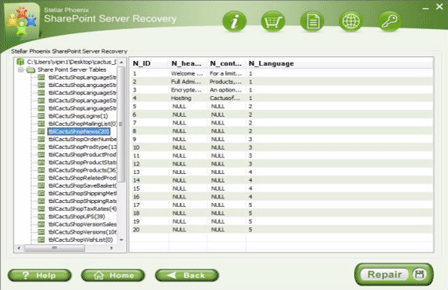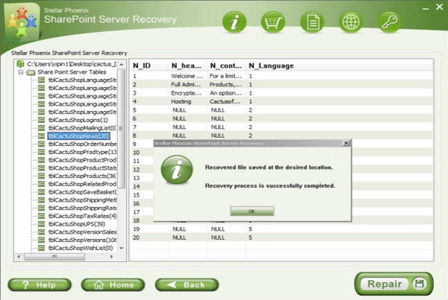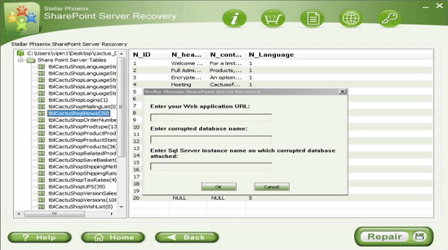SharePoint 2013 SSRS – The remote server returned an error: (500) Internal Server ErrorFile Repair Tool Blog
Microsoft Office SharePoint Server (MOSS) is SharePoint server software that is associated with intranet, document management, etc. It is multi use platform that is used for managing web portals, websites, social networking sites, documents, contents and many more. It is one of the ideal software for making organizational intranet. But sometimes you may encounter several errors while you try to access SharePoint services. One of the errors is mentioned below.
While you try to install SharePoint Server Reporting Service on your system, you may encounter with SSRS error. This error may annoy and irritate you as you may not be able to find the reasons why it is happening. So, in this post you will learn how to fix this error. Actually the error is “The remote server returned an error: (500) Internal Server Error” when you click on “System Settings” or “Manage Jobs”
The error:
However, you will not come to know about much, but when you go to Event Viewer you will see two Event IDs that are associated to this and they both are having same messages.
Event ID 1310
Event ID 6398
The thing which you will find on both those errors is “Could not find permission set named ‘ASP.Net”. If you search on internet to fix this error, you will find that the best SharePoint people are not able to help fixing this error.
If you are getting this error messages then you must have done the following things, you may have:
- Install Reporting Servers + Addin
- Run the PowerShell commands (Install-SPRSService & Install-SPRSServiceProxy & get-spserviceinstance -all |where {$_.TypeName -like “SQL Server Reporting*”} | Start-SPServiceInstance)
- Create the SSRS Service Application.
How to fix “The remote server returned an error: (500) Internal Server Error” Manually
- Delete the SSRS Service Application as well as Databases.
- Run the following PowerShell command: “get-spserviceinstance -all |where {$_.TypeName -like “SQL Server Reporting*”} | Stop-SPServiceInstance”
- Run the following PowerShell command: “Install-SPRSService –Uninstall’
- Run the following PowerShell command: “Install-SPRSServiceProxy –Uninstall’
- Go to Control Panel, choose SQL Server and then click Repair. Do a full repair of the SSRS + Addin feature (you shouldn’t haveinstalled anything else on the server anyway, hence, just select all)
- Run the PowerShell commands (Install-SPRSService & Install-SPRSServiceProxy & get-spserviceinstance -all |where {$_.TypeName -like “SQL Server Reporting*”} | Start-SPServiceInstance)
- Create the SSRS Service Application.
 |
 |
 |
How to fix “The remote server returned an error: (500) Internal Server Error” Automatically
If following the above methods does not help you to fix the error then you can go for SharePoint File Repair tool. It is specifically designed to fix and recover several SharePoint errors. It comes with advanced algorithm that scans your entire SharePoint objects and helps you in fixing the errors and corruption. You can download the demo version to check the functionalities of SharePoint File Repair tool.
User Guide:
- Firstly launch the SharePoint Recovery Tool you would find an interface. This interface screen displays two options to recover SharePoint data: ‘Complete Repair’ and ‘Document Recovery’ Select as per your requirement.

- If you choose ‘Complete Repair’, the screen will show the options for selecting and searching SQL Server (.MDF) files. Click on ‘Select File’ to select a SharePoint database for repair. If you do not know the actual path of the database which you want to repair, click on the ‘Search File’ to locate the MDF file in a specific drive. After selecting the desired file initiate the scanning process
- After finishing the scan, the software would generate a tree of all SharePoint database tables and will display it in the left pane. You can select the table in the tree and can have the entire preview in the right pane. Then Click on ‘Repair’ to begin repairing for the selected database.

- After clicking on ‘Repair’, this dialog box will appear. Specify the SQL Server name or Instance name and the desired destination path. Click on the ‘Browse’ option to choose the destination path. And select ‘OK’ button.

- Once this process gets completed, you would find a dialog box that displays this message ‘Recovered file saved at the desired location. This shows that Recovery Process has successfully completed’. And select ‘OK’ button.

- You would find another dialog box that asks whether you want to attach the repaired database to the web application. If you click on ‘Yes’ button, the above dialog box will be displayed. In the web application URL type, the name of the corrupt database and SQL Server Instance name. Then Select ‘OK’ button and proceed. When the process gets finished, you would be able to access the repaired database by opening the web application.

